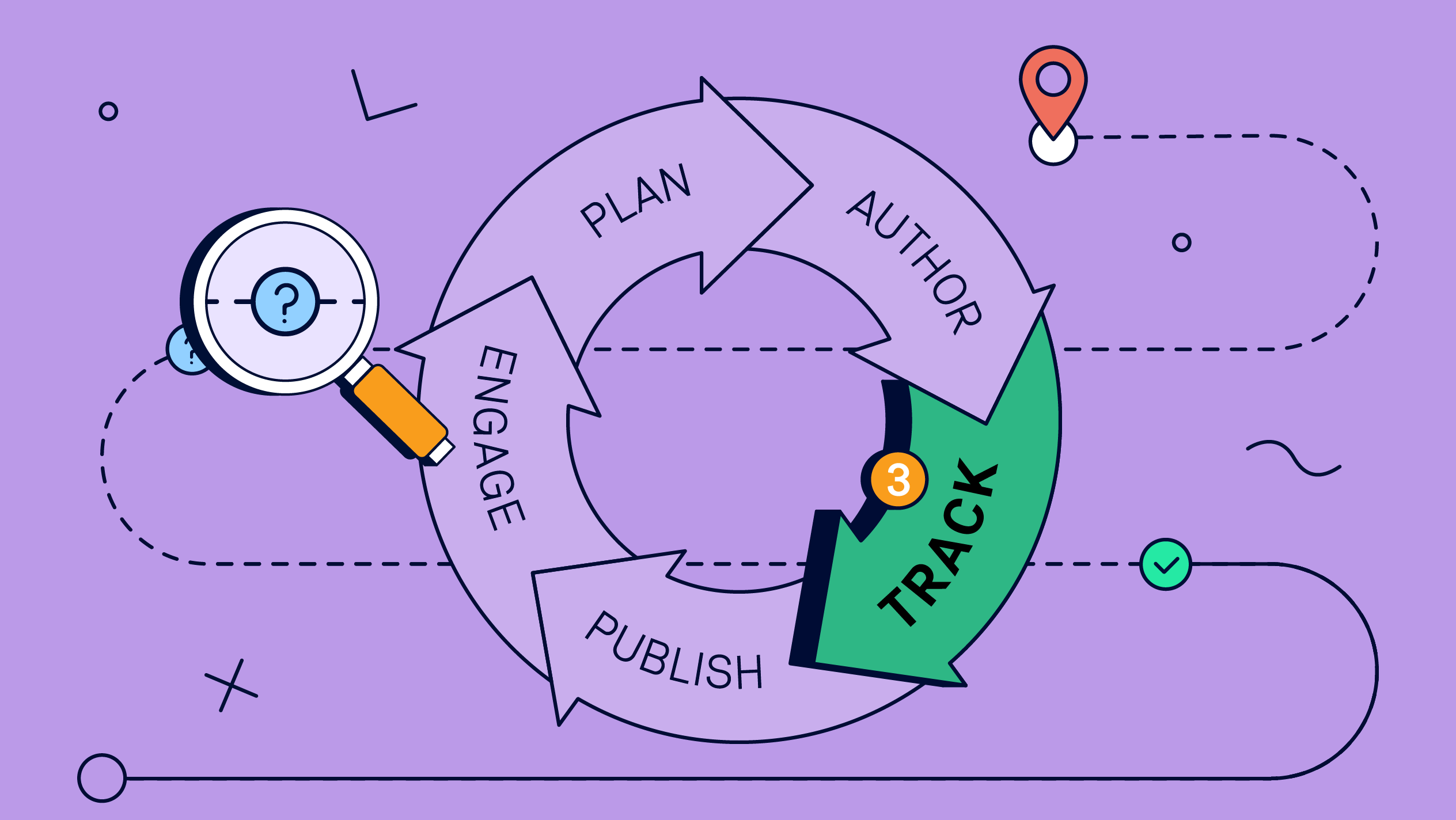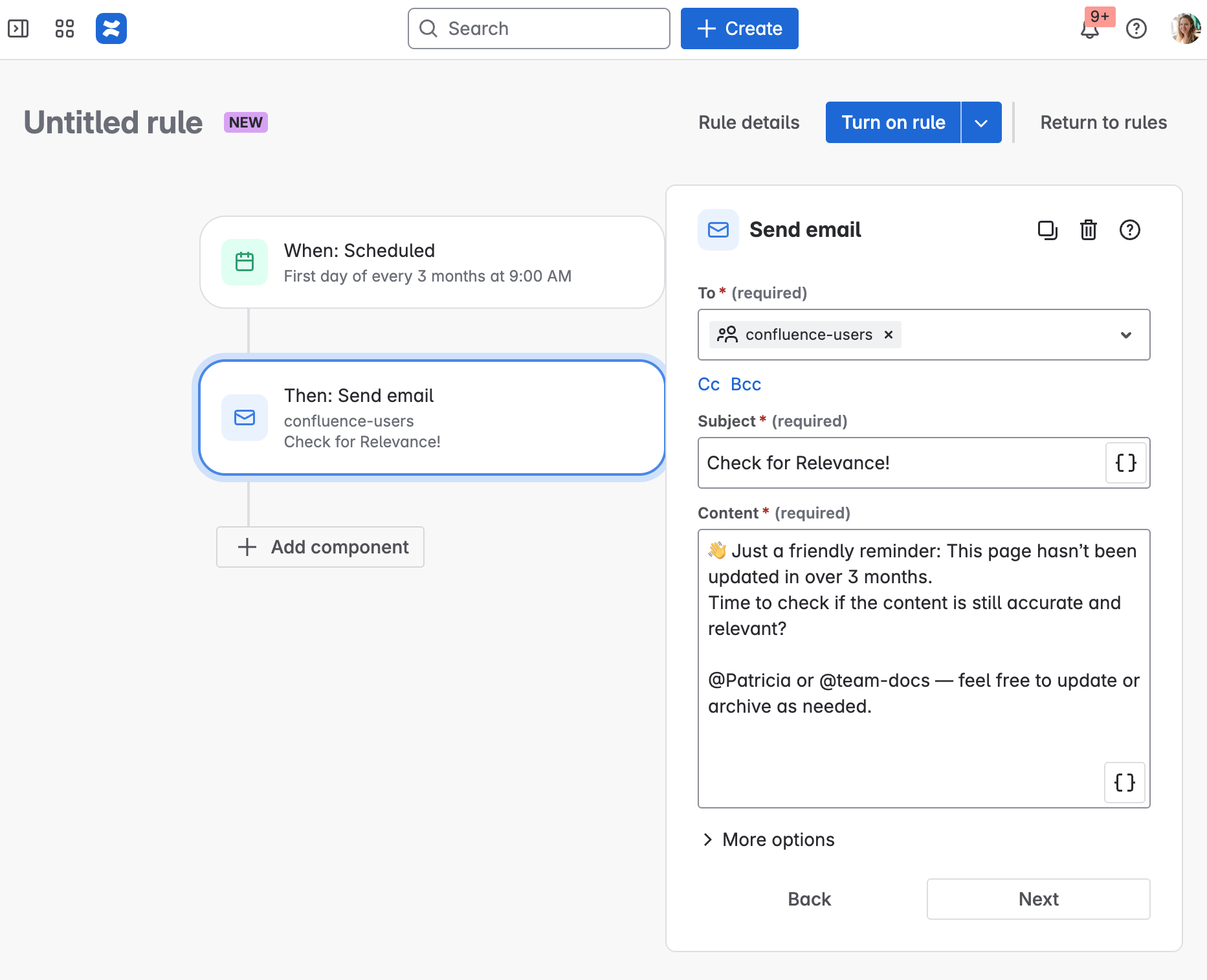🔍 The Secret to Relevant Content
You planned it, you wrote it, now it’s time to manage your content. And that means: reviewing for relevance. This covers part 3 of our 5 phases of the knowledge sharing life cycle. ⬇️

Turns out, the real secret to relevance… is not keeping secrets at all.
It’s about being honest with your content: is this still helping someone? If not, it's time for a refresh or a graceful goodbye. Because nothing breaks trust faster than outdated, untrue, or just plain irrelevant documentation.
📌 What Is “Relevant” Content Anyway?
Relevance isn’t just about being accurate (though that’s a good start). It means your content still reflects what your audience needs right now:
-
Does it answer current questions?
-
Does it match your latest product version (if it’s product documentation)?
-
Does it feel like something you'd confidently share a link to?
If the answer is “kind of?”, then it’s time for a check-in.
🛠️ So, How Do You Keep Content Relevant?
Keeping content relevant isn’t about perfection. It’s about building small habits that make a big difference.
Here are a few ways to make sure your pages keep working long after you hit publish.
1. Build a Review Loop (That Actually Happens)
Content doesn’t age like wine. It ages like that mystery container in the back of the fridge. 🧀 It’s important to keep an eye on the best-before date and act when it’s due. Set reminders to review pages every 3–6 months, or better yet, let Confluence automation do that for you.
Simply run a scheduled trigger that checks for pages that haven’t been updated in the last three months and send the reminder.

🎯 Pro tip: If something changes outside of your product release cycle (like your team structure, or a new onboarding flow), build in a flexible review step to catch those sneaky shifts.
2. Because Even Eagle Eyes Blink
Even if you have the best review loop in the world, stuff will still slip through. Why? Because life happens. You’re busy. Someone’s asking for a new release note, your team just switched tools, and suddenly someone slacks you: “Hey, can we just update that one sentence?” And now you’re deep-editing a page from 2021 in the middle of lunch.
That’s why we love a good safety net. Apps like Scroll Content Quality from our team can help by running quality checks on your Confluence content! So you can spend less time chasing ghosts, and more time writing the stuff your readers actually need.
Or, ya know, finishing that lunch.
3. Ask for Feedback (and Mean It)
Even the best writers have blind spots. It’s not a flaw, it’s just how brains work. You know your subject and content too well. That’s why you need a second pair of eyes, preferably from someone who doesn’t already know how the product works inside and out.
But here’s the trick: don’t just ask “Can you take a look?” That’s how you get surface-level thumbs-ups or “Looks good to me!” when what you really needed was: “Hey, this whole section is outdated!”
Instead, provide more context on what the feedback should be focused on.
Ask things like:
-
“Is this still how our support team handles this flow?”
-
“Would this page help a new hire, or just confuse them?”
-
“Is the language and tone here consistent with our newer content?”
Confluence makes this easy. You can use inline comments for targeted questions and page comments for the bigger-picture stuff. And always mention someone (@) so it doesn’t fall into the void of “I thought someone else was on it.”
🎶 Let It Go

Elsa knows how to do it. But it’s tricky, isn’t it?
You put work into the content on that page. But if it’s outdated or unclear, it might be doing more harm than good.
Imagine a user lands on it, thinking they’ve found the answer they need. They follow the steps, try the solution… and it doesn’t work. Now they’re not just stuck, they’re confused, frustrated, and probably opening a support ticket.
Outdated content doesn’t just sit quietly in the background. It creates noise, breaks trust, and wastes time.
Sometimes the most helpful thing you can do is hit “archive” and clear the path for something better.
Not sure when to hit “archive” or how to do it without panic? We’ve got you. In our full article, we share practical tips on how to decide what stays, what goes, and how to keep your content ecosystem tidy without overthinking it.
Confluence News
🆕 In Case You Missed It: Products Are Now Apps
Atlassian is renaming their “products” to “apps”. So It’s not the product Confluence, it’s the app. This change is already rolling out in Atlassian Administration, and you’ll start seeing “apps” in emails, docs, audit logs, and more. Nothing about how you manage them is changing, just the term. And we hope you’ve met Jira “work items” by now!
🧩 New: Import Mural Boards into Confluence Whiteboards
You can now bring your Mural collaboration into Confluence. Simply export your Mural board as a PDF and import it into a Confluence whiteboard to continue working where your team already collaborates. It’s a handy way to centralize brainstorming without starting from scratch. Just note that not all elements (like comments or links) transfer perfectly. Give it a try and see what sticks!
From K15t
🎥 Inside the Confluence Team
In case you missed this week’s live stream: Matt Reiner sat down with Aya Tange Beaumont (Principal PM) and Jefferson Taylor (Head of Product) from Atlassian to talk about what’s new in Confluence and where it’s headed. They also answered your questions live!
